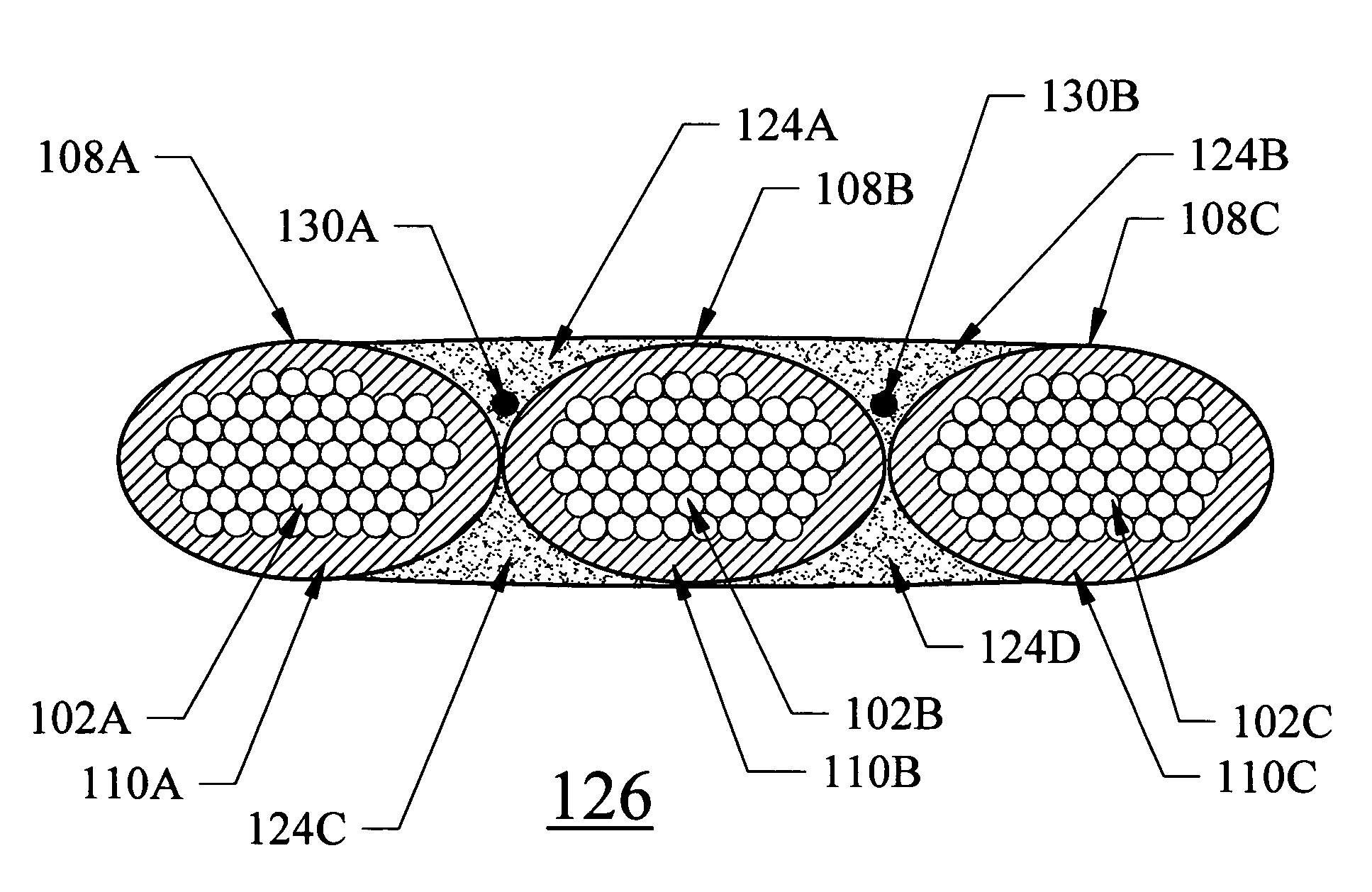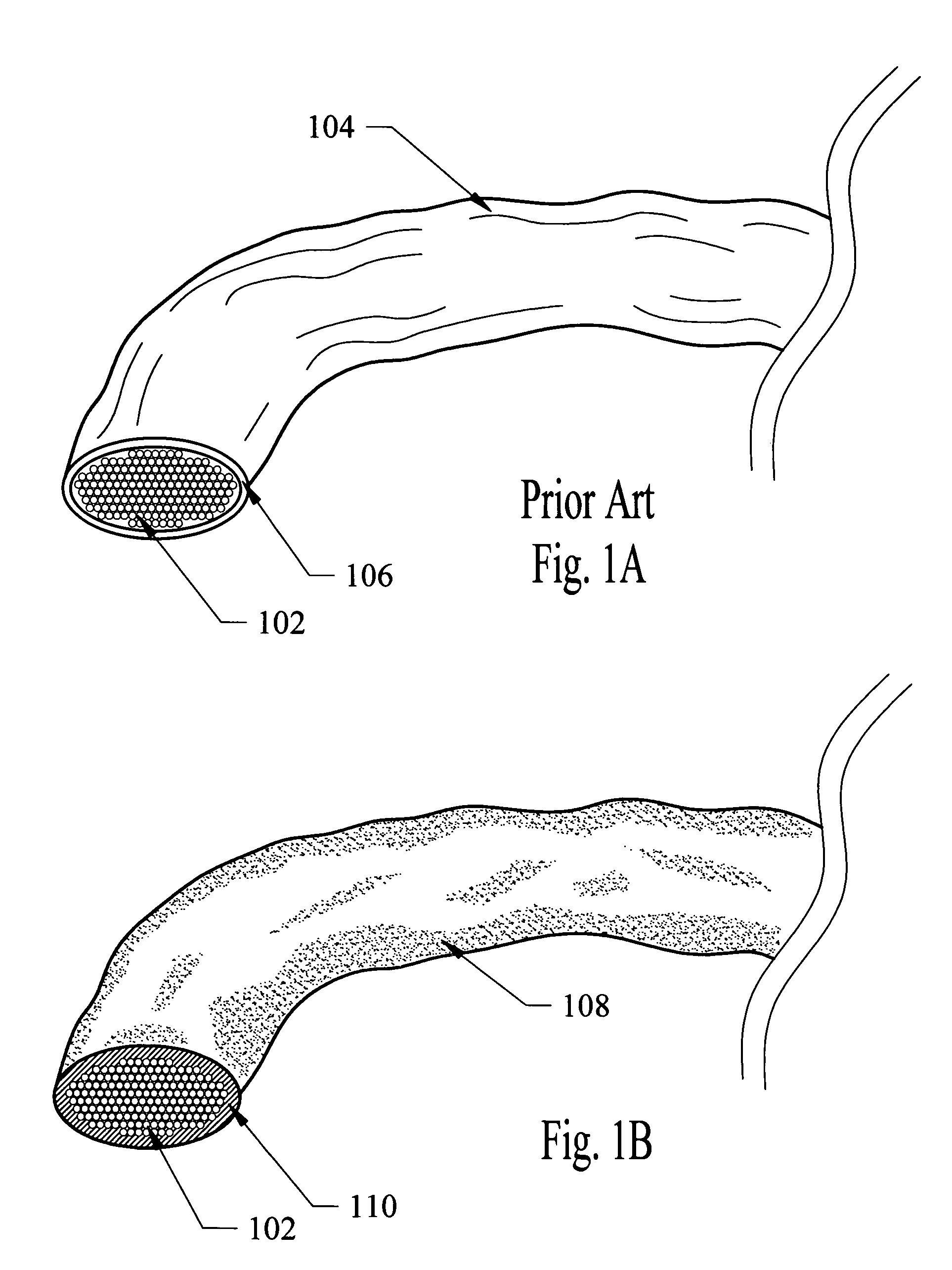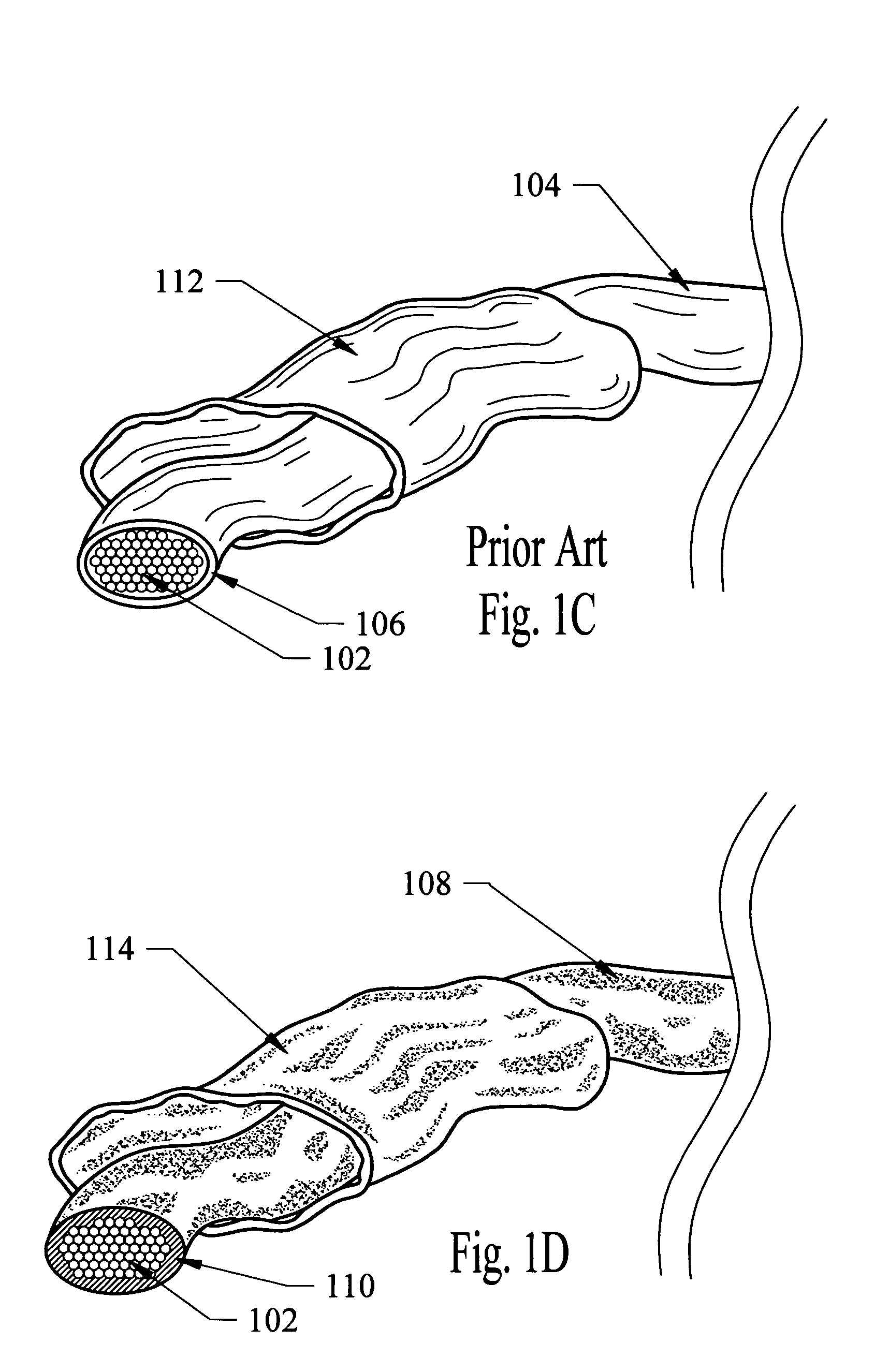During normal operation the lifting sling can be subjected to forces that can result in damage to the lifting sling materials.
Damage to the lifting sling materials can cause
catastrophic failure during use and as such is a critical concern to those who manufacture, sell, and use lifting slings.
However, inspection of the lifting sling can be difficult in that much of the lifting sling may be covered or inaccessible.
In addition, it can be very difficult to visually identify lifting sling over-stretching and other types of forces, traumas, or crushing types of lifting sling damage.
In addition to the inability to accurately determine by
visual inspection lifting sling damage and in particular lifting sling damage to the core materials, damage by
ultraviolet light can also render a lifting sling unsuitable for use.
As such, while visually appearing as though the lifting sling is suitable for use, the lifting sling can be prematurely rendered unsuitable for use by
ultraviolet light that has damaged the nylon and
polyester materials.
In addition to lifting slings being damaged by excessive forces, crushing, pinching, binding, stretching, and
ultraviolet light exposure,
dirt and other contaminants can also cause damage to the lifting sling core materials.
In this regard,
dirt and contaminants can increase the abrasion among the lifting slings core materials and or core fibers.
As such, the increased abrasion among the core materials can cause premature degradation of the lifting sling, and or result in a
catastrophic failure of the lifting sling during use.
Dirt and contaminants introduced into the core materials, causing an increase in abrasion of the core materials, are particularly damaging to nylon types and
polyester types of lifting slings.
Though a good recommendation, in practice lifting slings find applications in factories, on
truck beds, on loading docks, and other places where
dirt and contaminants are plentiful and the washing of lifting slings on a regular basis is impractical.
In general, contaminants such as dirt, chemicals,
ultraviolet light, and other elements that come in contact with the lifting sling can prematurely degrade the lifting sling and or cause catastrophic lifting sling failure.
In addition, excessive heat
exposure can cause the lifting sling to warp, melt, pit, or otherwise become damaged.
As such,
exposure to excessive heat can result in premature and permanent degradation of the lifting sling materials and lead to an increased possibility of catastrophic lifting sling failure under load.
Overstretching a lifting sling can also permanently damage the lifting sling and rendered it unsuitable for use.
In this regard, applying a load to a lifting sling beyond the lifting slings rated safe limits can cause the lifting sling to stretch.
Stresses resulting in overstretching of a lifting sling are particularly common and can permanently damage nylon and polyester types of lifting sling materials.
Once over stretched the lifting sling cannot be repaired.
In addition, once over stretched the lifting sling can no longer carry the maximum load for which the lifting sling is rated.
Lifting sling covers or sheaths can however prevent a thorough inspection of the lifting sling since the cover or sheath is typically wrapped around the lifting sling core materials keeping at least a portion of the lifting sling core materials hidden from
sight.
The problem of lifting sling safety and the use of covers and sheaths is further complicated in that, with a cover or sheath wrapped around the lifting sling core materials, cleaning dirt and contaminants from the lifting sling core materials is more difficult.
In addition to keeping dirt, chemicals, and other contaminants trapped and concealed within the lifting sling core materials, the lifting sling cover or sheath can require an extensive manufacturing process to fabricate.
This loose fitting fashion tends to cause the covers or sheaths to slide back and forth over the lifting sling core materials.
The ability of the covers or sheaths to slide back-and-forth over the lifting sling core materials can result in the lifting sling's inability to grip the load and otherwise promote slippage of the load.
Shifting loads can be an extreme danger and as such a lifting sling that has an inability to reliably grip the load and otherwise minimize slippage of the load is of little value and is a
safety risk.
Furthermore,
fiber optic cable tests do not take into consideration dirt, chemicals, heat, ultraviolet light, and other destructive conditions as well as excessive loading and stretching of the lifting sling core materials, all of which can degrade the lifting sling and or cause catastrophic failure under load of the lifting sling.
In addition, the use of a cover or sheath can reduce the effectiveness of
fiber optic cable inspection methods and the use of a cover or sheath may prevent the
fiber optic cable from being subjected to the same forces as the lifting sling core materials.
Such limitations can include the damaging
effects heat and or ultraviolet light can have on lifting sling materials, in particular on nylon and polyester types of lifting slings.
Other limitations include the detrimental effects dirt, chemicals, heat, and other contaminants can have on the lifting sling core materials.
In general, dirt, chemicals, and other contaminants can increase the abrasion amongst the lifting sling core fiber materials, which can result in permanent damage of the lifting sling.
As such, inspection of the multi-core lifting sling elements is difficult at best and the current preferred structure, of sewn covers or sheaths, precipitates the collection of dirt, chemicals, and contaminants which can prematurely degrade the lifting sling, hide damage, and or lead to potentially catastrophic lifting sling failure under load.
In addition, there is currently no way to monitor and track the use of lifting slings, including the monitoring and tracking of the types of loads that have been lifted, the
frequency of use, and other
telemetry and data that can be utilized to determine if the lifting sling is suitable for use and or if the lifting sling has been subjected to forces or contaminants that have damaged the lifting sling materials.
 Login to View More
Login to View More  Login to View More
Login to View More 


